Best time to harvest cabbage (Pointed cabbage harvest season) – Grow winter cabbage plants
Grow cabbage in field crop cultivation. The cabbage planted in September after soil preparation in August is now ready for harvest. (It is the best time to harvest pointed cabbage.)
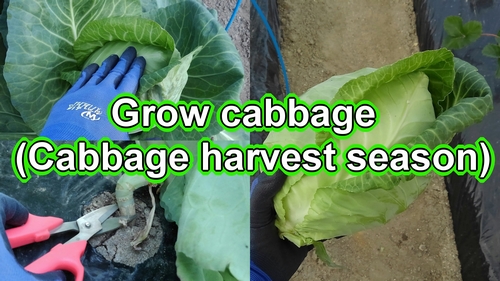
Cabbage is broadly divided into “winter cabbage" planted in autumn for winter harvest, and “spring cabbage" planted around autumn for harvest in the following spring.
This season, I cultivated pointed cabbage, which has a pointed shape. Pointed cabbage is a variety with a shape similar to spring cabbage.
Best way to grow cabbage (Pointed cabbage plant growing)
Cabbage (winter cabbage) underwent soil preparation in early August. The compost and fertilizers used for growing cabbage are fully ripened cattle manure compost, chicken manure, and canola cake. This cabbage (pointed cabbage) is grown through pesticide-free organic farming, so organic compost and fertilizers are used.
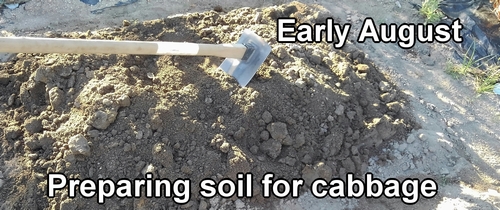
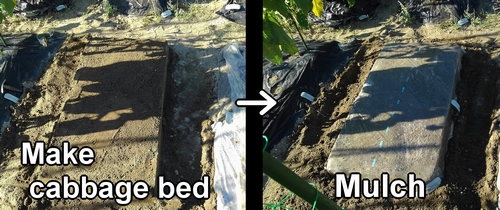
The planting time for cabbage seedlings was early September. (Best time for planting cabbage.) The planting method for cabbage seedlings is to plant them alternately to avoid overlapping. Planting alternately allows you to ensure sunlight and ventilation for cabbage even in narrow spaces.
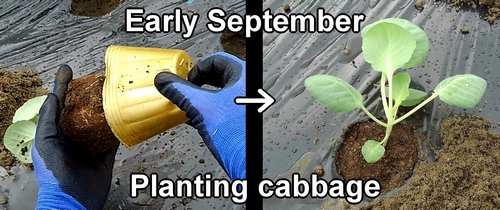
When the planting time for cabbage is delayed, there is a possibility that the leaves may not form a head during the heading period. For cabbage, it is important to grow the outer leaves significantly by the heading period. Therefore, let’s make sure not to miss the planting time.
Autumn-planted cabbage (winter cabbage plants) has its suitable planting period for seedlings from early to mid-September.
Cabbages, belonging to the Brassicaceae family, are susceptible to pests. If planted without protection, they are vulnerable to damage from pests.
After planting the cabbage seedlings, let’s cover them with insect netting and engage in grow tunnel. It is important to implement grow tunnel at the time of transplanting to prevent pest damage to cabbage.
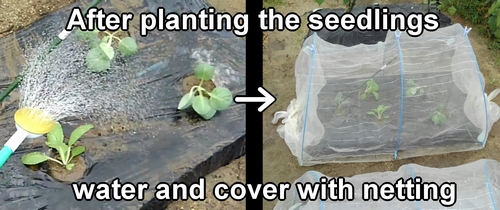
Since planting, the growth has been generally smooth. Along the way, some cabbage leaves were nibbled by insects, but since I promptly discovered and removed them, the damage was not significant.
By cultivating cabbage in a grow tunnel, the risk of pests can be reduced, but it does not eliminate it entirely. Therefore, it is still important to visually inspect and confirm with your own eyes.
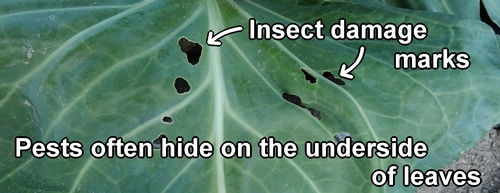
If there are holes in the leaves, there is a very high chance of pests. Also, the presence of insect droppings is another sign that pests are present. (Dispose of the found pests immediately.)
The cabbage’s add-fertilizing period was approximately 3 weeks after planting, around the end of September.
The fertilizer for cabbage (pointed cabbage) additional fertilizing is chicken manure. An important point during additional fertilizing is to make sure to bury the fertilizer in the soil. If you leave the fertilizer on the ground or on the mulch, pests and aphids may be attracted by the smell.
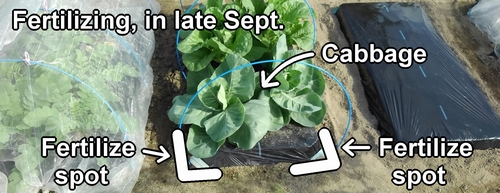
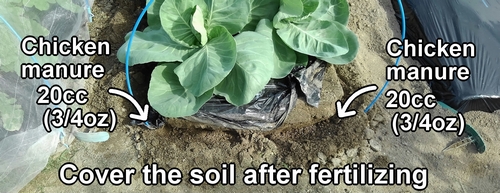
If the growth is going well, I think once is enough for cabbage add-fertilizing. Do not fertilize cabbage when it reaches the heading stage. Fertilizing at the heading stage can cause splitting and poor growth.
Best time to harvest winter cabbage (Pointed cabbage harvest season)
The indicator for determining the harvest time of cabbage is the firmness of the head. When you’re wondering if it’s time to harvest, try pressing the cabbage head from the top. If you feel a firm resistance, it’s time to harvest.
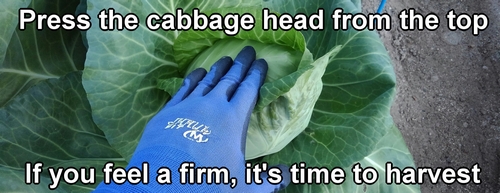
The harvesting method for cabbage is by the whole plant. To harvest cabbage, cut the heads off the root system with a sharp knife.
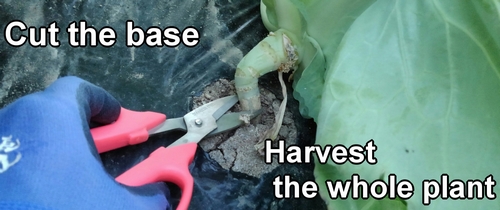
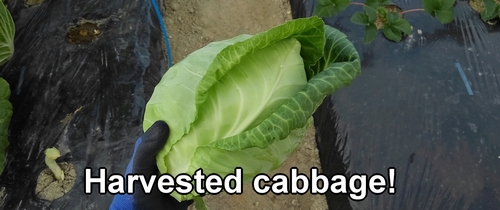
The harvested cabbage had a diameter of about 12cm (4.7 inches). It is a variety called “Misaki cabbage" (winter cabbage) known for its pointed head.
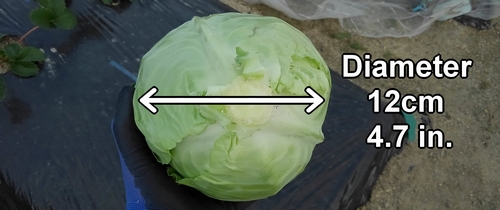
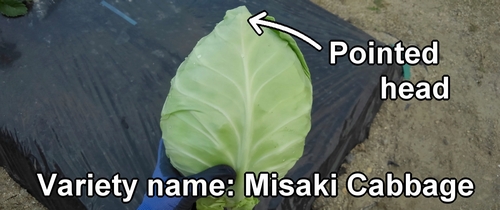
I still have one cabbage plant remaining, so I’d like to harvest it again around the time we finish eating the portion we harvested this time.
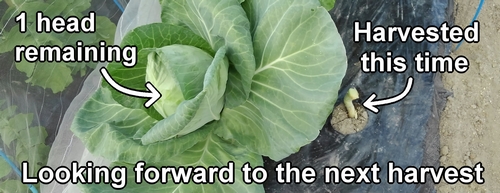
Related information on pointed cabbage cultivation(Frequently Asked Questions for growing pointed cabbages)
When is the best time to side dress cabbage? (What is the right time to apply fertilizer to cabbages?)
The time for side dressing cabbage is about 3 weeks to 1 month after planting. For cabbage planted in the fall, the planting time is around early September, so the side dressing time will be from the end of September to early October.
How to do side dressing for cabbage? (What is the way to do fertilizing for cabbages?)
For cabbage, apply side dressing in two spots about 20cm (7.8 inches) away from the base of the plant. After choosing the spots, dig a small trench with a hand trowel and put in chicken manure. If you are growing cabbage with plastic mulch, cut the plastic mulch at the side dressing spots.
After applying the chicken manure as side dressing, water it and cover it with soil. Watering the manure helps it break down faster. It’s also important to cover the manure with soil to keep pests away.
Following is the video for how-to. English subtitles are available.
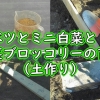
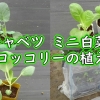
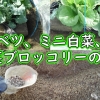
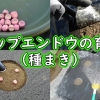
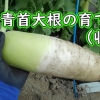
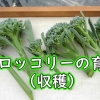



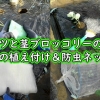


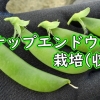
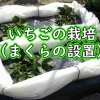
Discussion
New Comments
No comments yet. Be the first one!